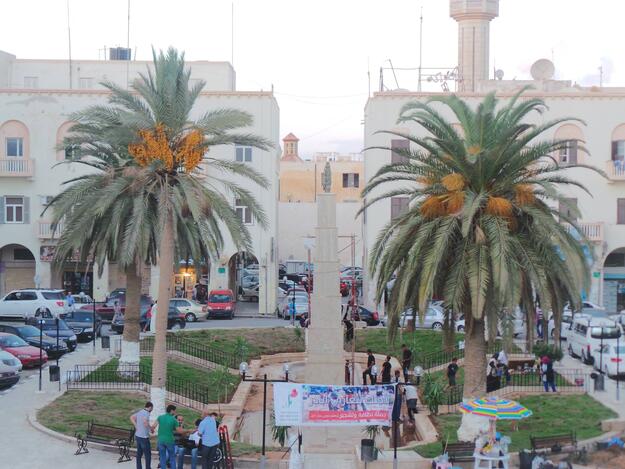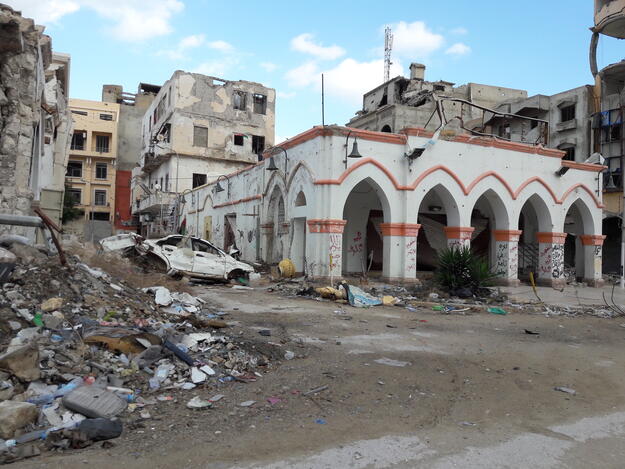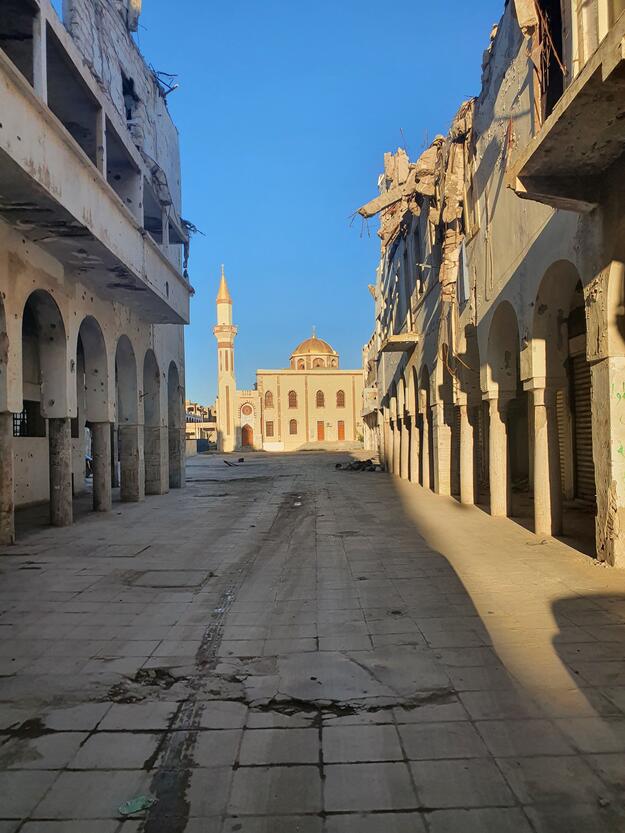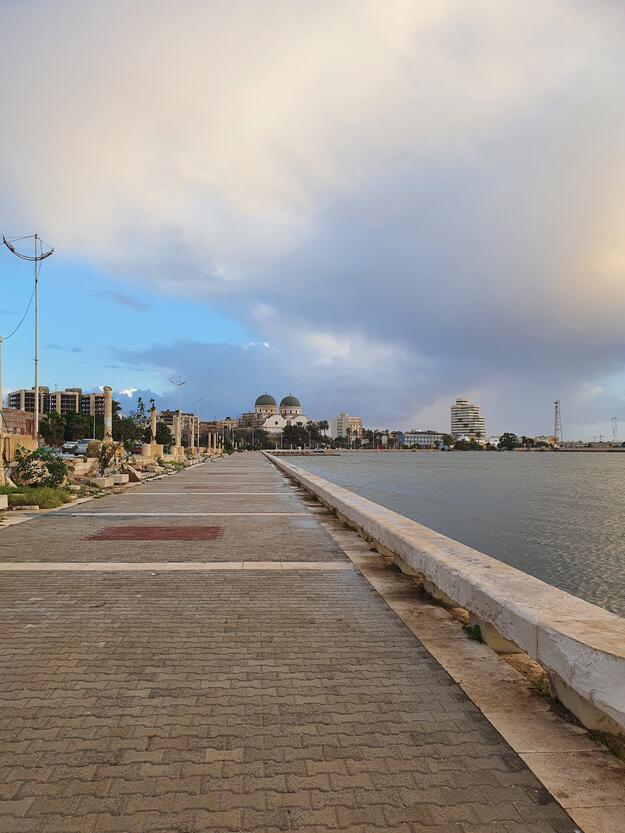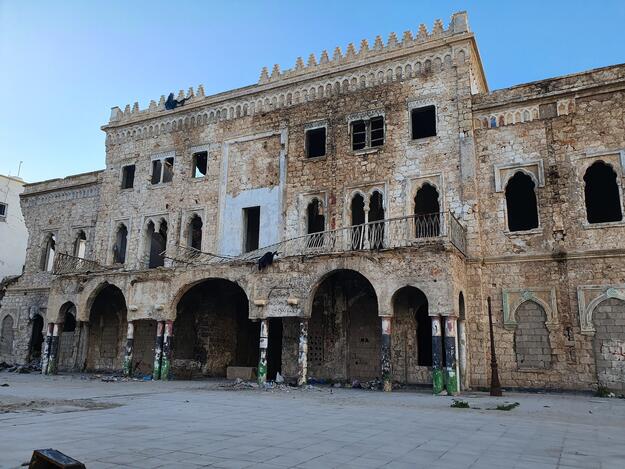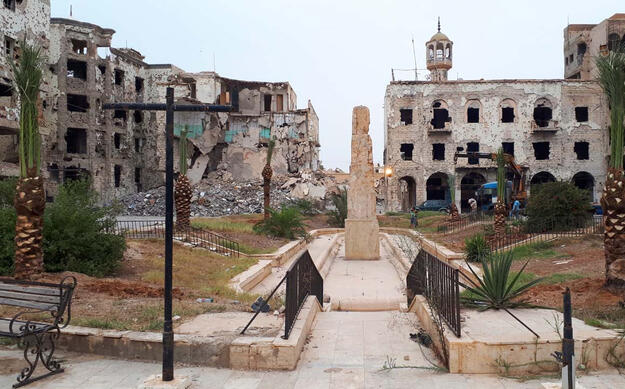Benghazi Historic City Center
Site History and Significance
Benghazi’s Historic Neighborhoods
The city of Benghazi interweaves the Arab and Ottoman architectural vernacular with modernist styles that were added under Italian rule in the early twentieth century. In the 1930s, colonial planners sought to preserve the historic city center, adding a new waterfront promenade, while also expanding the city outwards from the port and the historic core. The city was heavily bombed during World War II, but grew again in the postwar period, even as it was systematically deprived of public investment by the national government. It was from Benghazi’s Al-Manar Palace that Libyan independence was proclaimed in 1951 to a crowd assembled in the small square in front of it.
An Urgent Need for Reconstruction and Revitalization
After a decade of turmoil and conflict, Benghazi is in urgent need of urban reconstruction and revitalization. The historic center of Libya’s second largest city has been derelict since 2017, after heavy fighting and ongoing civil conflict that followed a popular uprising in 2011, which sought a democratic transition for the country. The prolonged battle for the city and the destruction of the city center have taken a harsh toll on locals, with one third of Benghazi’s residents displaced from their homes and the city’s infrastructure seriously impaired.
The effort to recover the city center is now under way, as Benghazi residents seek to inhabit a livable city with adequate infrastructure and services, including improved access to their history and culture. In pursuit of this goal, World Monuments Fund (WMF) and the American Society of Overseas Research (ASOR) worked with the Libyan Department of Antiquities and Libya’s Historic Cities Authority in 2018 to conduct a damage assessment in the historic center of Benghazi, with support from the U.S. Department of State through the Ambassadors Fund for Cultural Preservation.
Inspiring Inclusive Recovery Efforts
Despite these efforts, much more is needed to plan, fund, and implement a city-wide reconstruction and rehabilitation program for Benghazi’s historic neighborhoods. To secure the recovery of salvageable buildings, authorities must conduct a large-scale demining effort, as well as remove debris, shore unstable building elements, prevent unauthorized demolition, and control access to unsafe areas. Participatory recovery must bring together municipal authorities, professional institutions, civil society organizations, and local, private actors to revitalize the urban center.
2022 World Monuments Watch
Inclusion of Benghazi on the 2022 World Monuments Watch underscores the need for multilateral support and funding for critical recovery. WMF’s engagement focuses on the rehabilitation of Silphium Square, a key public space, as a catalyst for future urban recovery and revitalization for the benefit of local residents.
![]()
Learn More
Through the World Monuments Watch, WMF collaborates with local partners to design and implement targeted conservation programs—including advocacy, planning, education, and physical interventions in the historic built environment—to improve human well-being through cultural heritage preservation.
Sign up for our newsletter to receive regular updates on our projects, stories from the field, upcoming events, and more!
![]()

